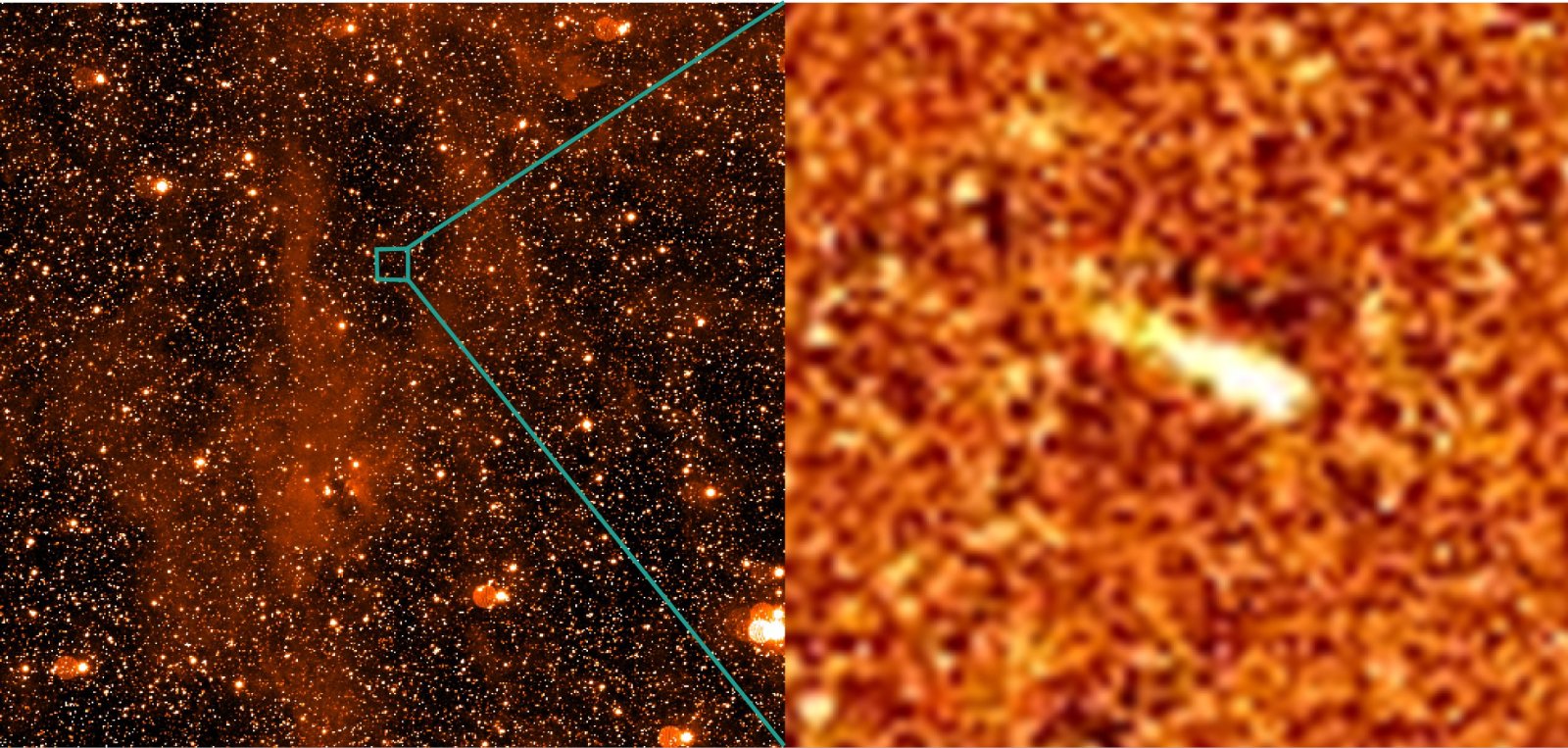In a case of cosmic forensics that could rival even an episode of CSI, scientists have pinpointed a moment 18 months previously when two asteroids collided.
In January 2010, the LINEAR (Lincoln Near Earth Asteroid Research) study, which is a robotic scan of the sky, picked up a strange object in the asteroid belt out beyond Mars. Dubbed P/2010 A2, it had a long comet-like tail but, oddly, no central nucleus (body). And, orbiting as it does amongst the asteroid belt, it's also in the wrong place and moving the wrong way to fit the classical cometary description.
 However, the mystery has now been solved in two stunning papers presented this week in the journal Nature. In one, University of California Los Angeles astronomer David Jewitt and his colleagues describe the results of turning the Hubble space telescope on the odd object, whilst the second paper, by Max Planck Institute for Solar System Reserach scientist Colin Snodgrass, provides an off-world perspective by imaging P/2010 A2 from outer space using the Rosetta probe. By comparing these two views it's possible to reconstruct the shape and distribution of the tail and of the object itself.
However, the mystery has now been solved in two stunning papers presented this week in the journal Nature. In one, University of California Los Angeles astronomer David Jewitt and his colleagues describe the results of turning the Hubble space telescope on the odd object, whilst the second paper, by Max Planck Institute for Solar System Reserach scientist Colin Snodgrass, provides an off-world perspective by imaging P/2010 A2 from outer space using the Rosetta probe. By comparing these two views it's possible to reconstruct the shape and distribution of the tail and of the object itself.
What this reveals is that the object is about 120 metres across and streaming in its wake is a dusty cloud 200,000 km long and made of gravel particles measuring millimetres to centimetres across. This confirms a case of mistaken cosmic identity, because P/2010 A2 isn't a comet at all but an asteroid that has experienced a recent close encounter with another of its own kind, a smaller 3-5m diameter asteroid travelling several miles per second in the opposite direction!
Under the influence of light from the Sun, the team have found, the tail is spreading out, with the smaller particles being pushed further than the heavier ones. By measuring how far the particles have moved, it's therefore possible to wind back the cosmic clock to pinpoint exactly when the collision between the two objects must have taken place.
Incredibly, unlike most of the collisions in the asteroid belt, which we tend to this of as happening millions of year ago, this shows that the impact occurred on February 10th 2009, give or take a week!
These observations are important because we need to know where the dust in the Solar System comes from, including how much of it originates from colliding asteroids rather than outgassing comets. According to David Jewitt, "we can also apply this knowledge to the dusty debris discs around other stars, because these are thought to be produced by collisions between unseen bodies in the discs. Knowing how the dust was produced will yield clues about those invisible bodies..."










Comments
Add a comment